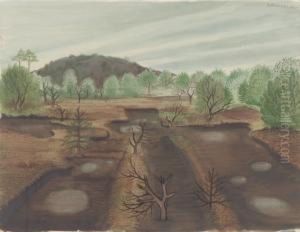Hans Mertens Paintings
Hans Mertens was a German artist, whose life was dramatically cut short due to the events of World War II. Born in 1906, Mertens developed his artistic skills in a period of great creativity and innovation in the arts, but also in a time that was overshadowed by the growing tensions in Europe that eventually led to the Second World War.
Mertens is often associated with the New Objectivity movement, which emerged in Germany in the 1920s as a counter-movement to Expressionism. This movement was characterized by a return to practical engagement with the world, depicting it in a more straightforward and unsentimental manner. Artists of the New Objectivity sought to portray the realities of the time, often focusing on the social issues and the everyday life of the period.
During his brief career, Mertens showcased his talent through a variety of mediums, including painting, drawing, and printmaking. His work was noted for its clarity of form, balanced compositions, and sometimes for the haunting portrayal of the human condition. Through his art, Mertens often reflected on the social environment of his time, perhaps foreseeing the devastating impact of the upcoming war.
Tragically, Hans Mertens' career was abruptly ended by his untimely death in 1941, at the age of 35, during World War II. The circumstances of his death remain unclear, but it is believed that the war directly or indirectly led to his demise. As a result, his oeuvre is limited, and his potential as an artist remained unfulfilled. Despite his early death, Mertens' work is still studied and appreciated by art historians and enthusiasts who recognize the poignant reflection of interwar Germany within his art.
